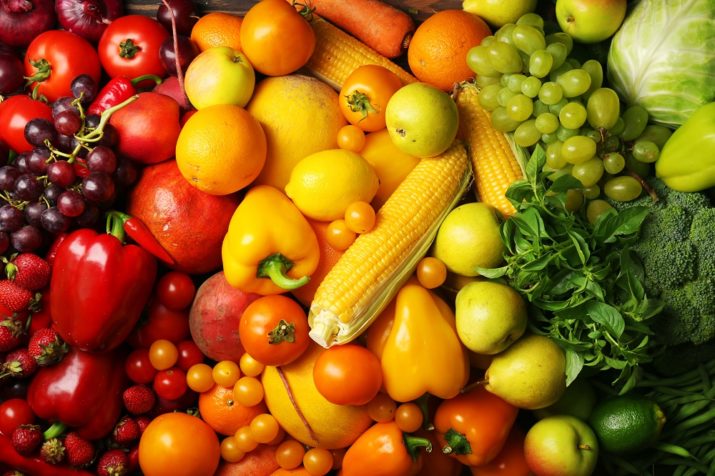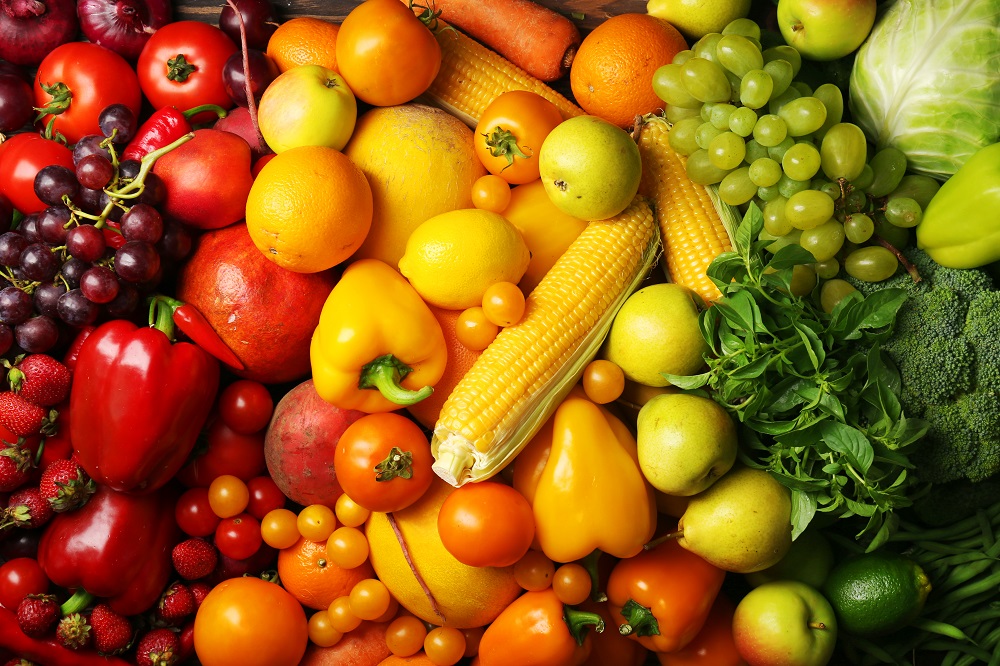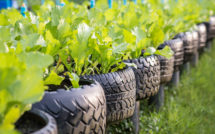

This is part of our special feature, Confronting Waste.
Global estimates suggest that approximately one third of all food that is produced is wasted (Parfitt et al 2010, Gustavsson, et al. 2011). Alongside this, a myriad of concerns, not least a concern for people who struggle to access food that is safe and healthy, has given rise to a host of organizations operating across the world that seek to move food that otherwise would be wasted from the commercial supply chain to the not-for-profit sector. This short article seeks to lay bare an ontological transition in the fundamental qualities of food as it makes this shift from being commercial food loss and waste to food that feeds people and has the capacity to support social good. Drawing on Mol’s material multiple ontologies approach (Mol, 2002, 1999, also see Law 2009, Jackson, et al. 2019), the article argues that once food has left the commercial supply chain and enters the surplus distribution network it ceases to be food loss or waste. In the chain of practices that move food along, throughout each step, food becomes a new thing with new affordances for enacting new effects, which are fundamentally different from those that arose in the previous step. As such, this article is not concerned so much with how food becomes wasted, but instead with what it becomes and the effects of that becoming as it moves from the commercial supply chain into the non-commercial sphere of surplus redistribution.
According to Mol (1999), an ontological position is one that calls into being a particular version of an object whereby the reality of that object is shaped by practices of knowing. These practices of knowing construct what becomes possible and what is not (effects) as that object is incorporated into different ecologies of practice (Law 2009, Nicolini 2012). These different effects are not simply a different representation of the same thing, but instead, are alternative generations of distinct realities (Mol 1999). What emerges are different versions of an object that can co-exist but do not require mediating consensus. Ecologies of practice are distinctive interconnected webs of human social activities, places, things, techniques, institutions, and orientations that sustain and order a practice that is of a particular kind of complexity (Schatzki 2002, Nicolini 2012), as such practices are fundamentally geographical. Seeking out multiple ontologies is to consider firstly where the options are produced and made to seem factual (Mol 1999).
Research conducted over three years in the United Kingdom adopted Cook’s follow-the-thing approach (e.g., Cook and Harrison 2007). The central point of data access involved a two-day-a-week, year-long participant observation with a major commercial food-to-charity redistributor in the United Kingdom. This data was broadened through interviews with three other UK based profit and not-for profit surplus food redistributors. Shorter-duration participant observation was conducted with two further UK based organizations that also redistribute surplus food. The data collection was stretched by conducting interviews with retailers and food manufacturers and through workshops, focus groups, and interviews conducted with front line charities that use surplus food in their projects, as well as eaters of that food. In the next section, the article interrogates how the realities of edible material alter as it moves from the site of the commercial food system into the spaces of surplus food use. The research argument presented here has not only academic value in theoretical terms for how we understand food waste, surplus food and, indeed, food more generally, but it also has significance for policy and practice as we seek to find ways to reduce food waste by moving edible, but non-commercial food on to eaters first.
Approaching food surplus through a multiple ontological lens
Figure 1 represents the relationship between the two ontological domains to be discussed in the rest of this section. The traditional commercial supply chain is represented in the blue block and is labeled as the commercial supply chain. The remainder of this section starts with the commercial food system, the dominant ontological position that informs much our current understanding not only of food systems more generally, but also of food waste, loss and surplus. The article then focuses on how the non-commercial food network creates a new food ontology for the edible matter that arises as loss within the commercial supply chain (Parfitt, et. al. 2010). This domain is represented in the green box in figure 1. This network will be explained further when ontological space of non-commercial surplus is discussed.

Figure 1: Flows of edible matter commercial supply chain and the non-commercial food network
Ontological Site 1: The commercial supply chain
This article aims to be illustrative, as such this discussion is limited to that part of the commercial supply chain that is post-farm gate production to be sold to consumers through supermarket consumption. Surplus food using organizations in the UK that took part in this research primarily receive food that arises from this part of the commercial supply chain. Supermarkets are also positioned as the end point of the commercial system in this discussion because according to WRAP (2018), the majority of food produced for consumption in the UK is made available in this way.
The primary purpose of food in the commercial supply chain is to produce profit for the producer, the distributor, and the retailer (Clapp 2014). In industry terms, what the food producers and retailors are seeking is to expand what is known as “stomach share.” Stomach share encompasses both the amount of an individual’s stomach that is filled by a particular brand’s food, but also the proportion of all stomachs being fed by that food. Stomach share is concerned with competition and profit. Food in this context comprises the edible material, the packaging, the production process including machinery and labor, branding, and food regulations. In this relationship, the edible matter is a relatively inexpensive and disposable component that when combined with these other elements enables the production of commercial value added that is food (Engels 1967). Where this happens is in the spaces of the commercial food chain, which is itself not only a flow of edible materials that become and un-become food but also a network whereby different ontologies of food come into being (see also Davies 2018).
One of the key moments that shapes the ontology of commercial food is the way in which packaging becomes part of the food itself, just as a peel or a skin is part of a banana. While packaging can protect food from becoming damaged in transportation, and thereby reduce the potential for waste, it also helps to create the possibilities for waste and surplus to arise. Packaging provides the relevant information required by law in order for consumers to make decisions about the safety of the food, whether this is related to the food’s potential to cause poisoning or induce an allergic reaction. Increasingly, there is nutritional labeling, again so that consumers are able to make decisions about the potential health related implications of the food. The food will also be packaged with information in order to send messages to the store about the potential freshness or quality of the food, which is calculated in days of shelf-life of food after which the taste and texture begin to degrade (see also Jackson, et al. 2019). Packaging also indicates the volume of food that consumers might expect to find within in terms of weights or numbers of units, which also unify products from one batch to the next. Both the volume and date information is designed to ensure that consumers have a unified customer experience of the food over time. There is also information that allows the traceability of the food if for example, it needs to be recalled. While these aspects of the label are important for melding together the edible material on the inside of the package to the package itself, what is also key to making this food is the branding and product label. Without a brand, the edible matter is not a commercial product and as such is not able to fulfil its role in producing profit (Midgley 2014, Clapp 2014).
To illustrate one of the many ways in which food can become wasted as a result of the ways in which this ontology of food plays out, I draw on an example provided by an internationally branded commercial food producer with whom I spoke and that was confirmed by food redistributors. When commercial assembly lines are started, the speed of the line must reach a calibrated level of flow. Until this speed is reached, the volume of food on the inside of the package will not match that which is on the label. The amount of potential waste that arises may be several pallets of units of potentially edible matter, but is commercially unviable. To try to sell this on would have implications for brand integrity, because the material would not meet consumer expectations. These units of edible material have become food loss, which is then tracked through accounting systems. If they end up in the landfill, they are wasted (see also Blake 2018).
What this example shows is how food is not just the edible matter that exists within a package, but also includes the package itself, and is located by the relationship that produces the possibilities of realizing a profit from the added value of the production process. In this context, the edible material becomes food if it is able to be moved on to the supermarket end of the commercial supply chain. Otherwise, it becomes loss or waste to the producer. Following Mol (1999), the market is the site that draws together and locates the material, institutional, and social elements within a set of practices that create the reality for this particular version of the food. Importantly, all forms (e.g., raw, chilled, frozen or ambient) and categories (e.g., meat, fish, vegetable, dairy, etc.) can become loss or waste, and this happens at all points along the commercial supply chain. One way to reclaim this edible material is by shifting its location from the commercial to the non-commercial sphere, where practices of meaning-making around edible material configure it as a carrier of social good, which is a fundamentally different ontological position. This is discussed more fully in the next section and is represented in the green box of diagram 1.
Ontological site 2: The non-commercial surplus food network
Edible material can enter the non-profit distribution network from along the whole length of the commercial supply chain. If it arises from further back in the supply chain, where volumes of surplus are measured in numbers of pallets or tons, it is broken down into units that are useable by those in the charity sector. Different categories of edible items may be combined together based on the ways that organizations will use the food. For example, foods that might be considered as breakfast foods will be made available to those who provide a breakfast club for children, or a hot breakfast for homeless people. Alternatively, ambient items may be distributed to those who provide an emergency parcel, which tends to incorporate foods that can be stored easily. Food that comes from this upstream part of the food chain can be well within the parameters of food that the commercial sector sees as fresh (Jackson, et al. 2019). Edible items that arise as a result of their emergence as loss from supermarket shelves tend to be smaller volumes and have shorter date-lives. These items may be distributed by organizations that collect the food from the supermarket and then move them on to charities, or its distribution may be enabled by a digital application that connects the store directly with the charity that will receive the food (see also Davies and Legg 2018).
To enable this edible material to become food, it must first shift from being loss or waste to becoming surplus food. As such, this edible material loses its commercial figurations. In this context, it no longer matters that the inside of the package does not align perfectly with what is on the outside of the package. Instead, it is refigured as a carrier of value. One way that those who distribute this material to community-based organizations do this is by re-figuring it as surplus food through practices of redirection from becoming waste into the non-commercial domain and in doing so render it beyond the logics of the commercial system (see Gherardi and Perrotta 2010 on material formation in practices). Although the edible material has lost its ability to act as the carrier of profit potential, through the first steps in the practices of redistribution, it takes on new materiality as a mechanism through which corporate social responsibility might work. As food producers and retailers are also participants in this practice, this involves aligning the food with a social good that enables a performance of meeting consumer expectations concerning how those in the commercial food chain should act toward this non-commercial edible material and enacting it as surplus to commercial need. This was expressed by a large food retailer in the following way:
Business has a clear place in reducing food waste. There is also a strong belief that we should take one problem to fix another. As a result, the redistribution of surplus to those who are hungry is seen as a good use for good. It is our ambition to lead the way and set an example of what can be done to accomplish something. The evidence of our success is that we are first, and others are now following.
As such, the effect of public discourse also creates the possibility for enabling this edible material to become surplus food rather than waste. At the same time, this process reassures commercial producers that they are not acting against their commercial interests, which is also expressed in this quote where competition is referenced (see also Evans, et. al 2017, Swaffield, et. al. 2018).
The redistribution charity with which I did the ethnographic work facilitates the movement of surplus to approximately ten thousand UK based charities. The community-based organizations that they supply enfold this food into three broad practice domains. In figure 1, these activities are represented as social eating, social distribution, and social cooking. Social eating involves meals that are produced by the organization to facilitate eating together, as is the case for example meals for a group attending a befriending session or for those who may be attending drug rehabilitation or as in a café setting. Social cooking includes cook-and-eat sessions or more traditional cooking lessons where the focus is on making together in a group. Social distribution is the distribution of food as items to be cooked and or eaten at home, for example, as ready meals, emergency food parcels or food pantries. Importantly, while some community-based organizations do only one activity involving food, the vast majority of the organizations that receive surplus food from this distribution organization are operating multiple food activities (e.g., a meal and a pantry and a cooking lesson). Social eating is the most dominant practice, followed by relatively closely by social distribution and then social cooking.
As charitable organizations engage in practices that use surplus food, distinct effects are enabled. I draw on the pantry model to illustrate this. Typically, a pantry model enables community members to collect a specified number fresh, chilled, frozen, and ambient items, including meat, bread, fruits and vegetables, dairy, and so forth, and there is usually some food choice. The food is accessible on a weekly basis over a long period of time. Pantries target low income communities, but not specifically those currently in an emergency situation. Pantries also tend to charge a small fee to cover running costs (e.g., electricity, transportation, etc.) to maintain the system but not to make a profit.
Surplus food arises unpredictably. Items that become surplus can be quite different from what would ordinarily be purchased by those living in these communities. Organizations that provide a pantry described being supplied “quite weird foods” such as “eels and fish with their eyes in.” One coordinator in one pantry talked about the effect this has had on diets.
So, I think it has changed how they cook as well. They get a different thing every week, so they try that, and they think, “well, I’ll have that with something else”, and then they have a completely different way of cooking. To be honest, a lot of people from (the village) wouldn’t have even looked at an olive, never mind tasting one. They have tried them and come back, and they love them. They are on low incomes, so they are not going to go buy the more expensive food if they had a choice between a chicken and a fancy steak, they would choose the chicken, but here they have a chance to try different things.
Someone who sourced his food through this type of support model had a similar discussion. The organization also ran a café and a cook-and-eat session. He said:
I know my basics like your apples, your bananas and all that sort of stuff, but we get all sorts downstairs and its only 20 pence. So, I might fetch stuff up and ask (one of the cooking staff) what do I do with this? What is this? How do I eat it? Like someone, the other day had passion fruit. I didn’t know what to do with it. You just cut it in half, and a get a spoon and eat it, but I did not know, now I do.
As new food choices are offered, conversations about the food are being held. Those volunteering and working in the pantries reported that people are talking to each other about the food that they receive and how to cook and eat it, thereby enhancing the social connectivity of those who live in these communities. The community organizations are affording access items that enable transformation of what is considered to be food within these communities and also enhancing the potential for new practices for knowing each other.
Conclusion
Multiple ontologies of edible material as it moves from the commercial food sector and into the non-commercial redistribution sector are produced by practices that figure food as waste or as surplus or as food. Different sites of practice give different realities to edible materials, and as such, there is no single intrinsic quality that makes a thing into food through universally recognized criteria (see also Jackson, et al. 2019). Furthermore, the ways in which edible materials are enacted are not merely different semiotic or representation registers. Food itself is fundamentally distinct in each ontological space because of the ways it is formatively assembled into practices and the material effects of those practices (Gherardi and Perrotta 2010).
In her writings, Mol asserts that how these ontologies shape and organize materials makes a difference in how dealing with materials is performed, and these performances have particular effects that extend beyond the thing itself (1999, 2002, see also Gherardi and Perrotta 2010). In the commercial system, edible material that does not fit becomes waste or loss, which in turn produces environmental effects such as increased carbon emissions that threaten the future of our planet. When this edible material, however, is located within the context of the community organization, it has the potential to become social food. This enables new shared food knowledges, as well as social connectivity, which is not to say that all enactments of charitable food support that incorporate surplus food can achieve these same effects. For example, Williams et al.’s (2016) research illustrates how hierarchical social distinctions can be maintained and stigma enacted through the practices of emergency food provision in the UK. Instead, this article illustrates the broader point that how we configure the practices of food support produces effects. Revealing these effects allows us to weigh them up against each other. This work therefore also has significance for policy and practice as well as an academic value because it gives conceptual tools for recognising and evaluating different forms of food enactments.
Megan Blake is a Senior Lecturer in Human Geography at the University of Sheffield. Her research considers the ways that everyday life, social institutions, and place help shape and inform the daily-life interactions and projects of individuals, reinforce or reduce social divisions, and enable or constrain access to resources. This research contributes to debates concerning food consumption, surplus food redistribution, food and its relationship with social justice and foodscapes, innovation, everyday food insecurity and family practices.
The author would like to thank those who participated in the project and the ESRC for funding the secondment that allowed the participant observation, and to the editors who helped improve the clarity of the argument.
References
Blake, M, 2018. “Enormous amounts of food are wasted during manufacturing—here is where it occurs.” The Conversation. Accessed 16/4/19. https://theconversation.com/enormous-amounts-of-food-are-wasted-during-manufacturing-heres-where-it-occurs-102310.
Clapp, J. 2014. “Financialization, distance and global food politics.” Journal of Peasant Studies 41 (5): 797-814.
Cook, I, and M Harrison. 2007. “Follow the Thing: “West Indian Hot Pepper Sauce”.” Space and Culture 10 (1): 40-63.
Davies, A R. 2018. “Redistributing surplus food: Interrogating the collision of waste and justice.” In Mobility, Mobility Justice, and Social Justice, by N Cook and D Butz, 236-275. Abingdon-on-Thames: Routledge.
Davies, A R, and R Legg. 2018. “Fare Sharing: Interrogating the nexus of ICT, urban food sharing, and sustainability.” Food, Culture and Society 21 (2): 236-275. doi:10.1080/15528014.2018.1427924.
Engels, F. 1967. Capital Vol 2. NY: International Publishers Co, Inc.
Evans, D, D Welch, and J Swaffield. 2017. “Constructing and mobilising ‘the consumer’: Responsibility, consumption, and the politics of sustainability.” Environment and Planning A 49 (6): 1396-1412.
Gherardi, S, and M Perrotta. 2010. “Doing by inventing the way of doing: Formativeness as the linkage of meaning and matter.” In How matter matters, by P R Carlile, D Nicolini, A Langley and H Tsoukas, 227-259. Oxford: Oxford University Press.
Gustavsson, J., C. Cederberg, U. Sonesson, R. Van Otterdijk, and A. Meybeck. 2011. Global food losses and food waste. Rome: FAO, 1-38.
Jackson, P, D M Evans, M Truninger, A Meah, and J A Baptista. 2019. “The multiple ontologies of freshness in the UK and Portuguese agri-food sectors.” Transactions of the Institute of British Geographers 44 (1): 79-93.
Law, J. 2009. “Seeing like a survey.” Cultural Sociology 3 (2): 239-256.
Midgley, J. 2014. “The logics of surplus food redistribution.” Journal of Environmental Planning and Management 12: 1872-1892. doi:10.1080/09640568.2013.848192.
Miller, D. 1998. A theory of shopping. Ithaca, NY: Cornell University Press.
Mol, A. 1999. “Ontological Politics: A word and some questions.” Sociological Review 47: 74-89.
—. 2002. The body multiple. Durham, NC: Duke University Press. doi:https://doi.org/10.1111/j.1467-954X.1999.tb03483.x.
Nicolini, D. 2012. Practice theory, work, and organization: An introduction. Oxford: OUP.
Parfitt, J., M. Barthel, and S. Macnaughton. 2010. “Food waste within food supply chains: quantification and potential for change to 2050.” Philosophical transactions of the royal society B: Biological Sciences 365 (1554): 3056:3081.
Schatzki, T R. 2002. The site of the social: A philosophical account of the constitution of social life and change. University Park, PA: Penn State University Press.
Swaffield, J, D Evans, and D Welch. 2018. “Profit, reputation, and ‘doing the right thing’: Convention theory and the problem of food waste in the UK retail sector.” Geoforum 89: 43-51.
Williams, A, P, May, J Cloke, and M Goodwin. 2016. “Contested space: The contradictory political dynamics of food banking in the UK.” Environment and Planning A 48 (11): 2291-2316.
WRAP. 2018. Surplus food redistribution in the UK; 2015-2017. Information sheet, WRAP. Accessed 4 15, 2019. http://www.wrap.org.uk/sites/files/wrap/Food%20Surplus%20Redistribution%20Estimate%202017%20-%20Information%20sheet.pdf.
Photo: Fresh vegetables | Shutterstock
Published on May 7, 2019.




